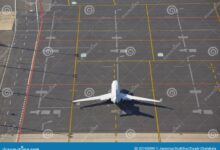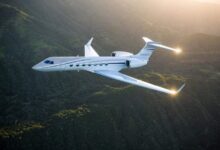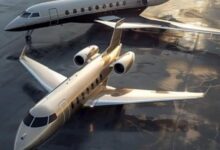How Much Does It Really Cost To Fly Private?
How Much Does It Really Cost to Fly Private? This question intrigues many, as the allure of private aviation is often clouded by misconceptions and hidden costs. Understanding the financial implications of flying privately is essential for anyone considering this luxurious mode of travel.
Private jet costs can vary dramatically based on several factors, from the type of aircraft to the distance of the flight. This overview will unpack the various expenses involved, offering insights into both the fixed and variable costs that come into play, ensuring you’re well-informed before taking to the skies.
Overview of Private Jet Costs
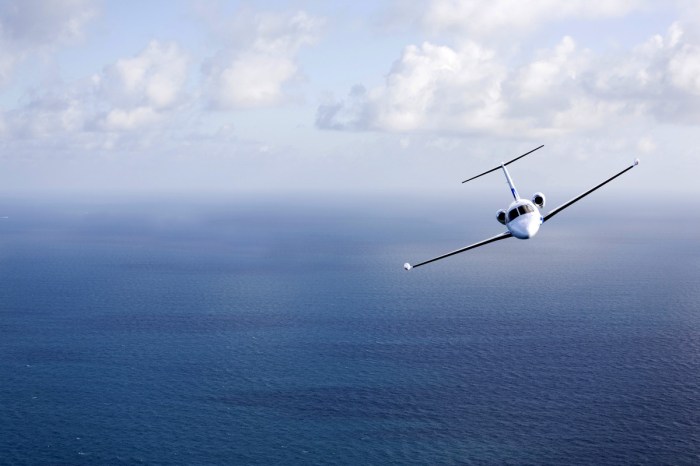
Source: mensjournal.com
Flying private offers a unique blend of luxury and convenience, but it comes with a range of costs that can be daunting. Understanding these costs is crucial for anyone considering a private flight, whether for business or leisure. From acquisition to ongoing operational expenses, the financial commitment of owning or chartering a private jet requires careful consideration.Private jet costs can be categorized into two main types: fixed costs and variable costs.
Fixed costs are expenses that remain consistent regardless of usage, while variable costs fluctuate based on flight frequency and other factors. Additionally, the type and model of the aircraft significantly influence pricing. Different jets have varying operational efficiencies, fuel consumption patterns, and maintenance needs, all of which contribute to the total cost of ownership or chartering.
Fixed Costs of Owning a Private Jet
Fixed costs are an essential aspect of budgeting for private jet ownership. These expenses typically include:
- Purchase Price: The initial investment to acquire the aircraft can range from a few hundred thousand dollars for a light jet to tens of millions for larger, more luxurious models.
- Insurance: Comprehensive insurance coverage is necessary, which can cost anywhere from $10,000 to over $100,000 annually, depending on the aircraft’s value.
- Hangar Fees: Storing the jet in a hangar incurs monthly fees, which can average between $1,000 and $3,000, depending on location and facility amenities.
- Crew Salaries: Maintaining a qualified flight crew, including pilots and cabin staff, contributes significantly to fixed costs, with salaries often totaling upwards of $200,000 per year.
Variable Costs of Owning a Private Jet
Variable costs fluctuate based on the frequency of flights and operational requirements. Key variable expenses include:
- Fuel Costs: Fuel consumption is one of the largest variable expenses. Depending on the aircraft type and flight distance, fuel costs can range from $1,200 to over $3,000 per hour of flight time.
- Maintenance: Routine maintenance and unexpected repairs can add up. Annual maintenance costs can average between $100,000 and $300,000, depending on the jet’s age and usage.
- Landing and Handling Fees: Airports charge fees for landing and handling services, which can vary widely based on location and can add several hundred to several thousand dollars per trip.
Cost Variations by Aircraft Type and Model
The costs associated with private jets vary significantly by aircraft type and model, reflecting differences in size, performance, and luxury features.
- Light Jets: Typically the most affordable option, light jets can be leased or purchased at lower prices, ranging from $3 million to $10 million, with operational costs around $1,200 to $1,700 per flight hour.
- Midsize Jets: Midsize jets offer greater range and comfort, with purchase prices usually between $8 million and $20 million. Operational costs range from $1,800 to $3,000 per flight hour.
- Heavy Jets: Large, luxurious jets can cost from $20 million to over $60 million, with operational costs exceeding $4,000 per flight hour. These jets often come with high-end amenities and long-range capabilities.
“Understanding the full scope of costs associated with flying private is essential for making informed decisions about ownership or chartering.”
Factors Influencing Private Flight Pricing
The cost of flying private is not a fixed value; rather, it fluctuates based on multiple factors that can significantly impact the overall pricing. Understanding these elements can help potential flyers better navigate the private aviation landscape and make more informed decisions regarding their travel plans.One of the most important considerations is the distance and destination of the flight. Longer flights typically incur higher costs due to increased fuel consumption, wear and tear on the aircraft, and the necessity for more crew hours.
Additionally, certain destinations may have higher landing fees, variable airport charges, or other surcharges that contribute to the overall price. Availability of the aircraft also plays a crucial role; if a specific jet type is in high demand or scarce, prices may rise accordingly due to limited options.
Seasonal Demand and Pricing Trends
Seasonal demand can have a significant effect on private jet pricing. During peak travel seasons, such as holidays and summer vacations, the demand for private flights increases sharply. This surge can result in higher costs for users, as operators are often booked to capacity, leading to an increased willingness to charge a premium for available flights. Factors influencing seasonal demand include:
- Holiday Travel: Major holidays often see a spike in demand as families and individuals seek convenient and comfortable travel options.
- Business Travel Peaks: Certain times of the year, like quarterly earnings reports or major conventions, see increased business-related travel, pushing prices up.
- Weather Conditions: Favorable weather during certain seasons can also drive demand, as travelers prefer to fly when weather conditions are optimal.
Operator Fees and Fuel Prices
Operator fees and fuel prices can have a considerable impact on the overall costs of private flights. Operators charge various fees for services, including:
- Landing Fees: Airports charge operators for landing, which can vary dramatically based on the airport size and location.
- Handling Fees: These are fees charged for ground services provided to the aircraft, including baggage handling, catering, and more.
- Membership Fees: Some operators have membership-based pricing models that can influence overall costs depending on usage.
Additionally, fuel prices play a pivotal role in determining flight costs. Fluctuations in the global oil market directly affect the cost of aviation fuel. For example, if fuel prices rise significantly, operators may pass these costs onto consumers, further increasing the overall expenditure for private flights.
Monitoring fuel prices is essential for understanding private flight costs, as even small changes can significantly affect overall pricing.
Cost Comparisons
Flying privately can often conjure images of luxury and exclusivity, but when it comes to cost comparisons, the nuances can be quite enlightening. In this section, we will delve into the financial aspects of private flights compared to commercial airlines, exploring the cost per passenger, the invaluable benefits of convenience and time savings, and how group size influences the overall pricing dynamics of private flying.
Average Cost Per Passenger
The average cost of a private jet charter can significantly differ from that of a commercial flight when broken down per passenger. While commercial flights can range from $100 to $1,500 per ticket, depending on the destination and class, private flights often start at about $2,000 to $3,000 per flight hour. This price can quickly escalate based on the jet type and additional services.
For instance, a short trip in a light jet covering around 1,000 miles might cost approximately $10,000. If five passengers share this cost, it translates to about $2,000 each. Conversely, a commercial flight for the same distance could cost around $300 per person. However, additional costs like checked luggage, in-flight meals, and unexpected delays can add up, making the gap narrower than it seems.
Convenience and Time Savings
The value proposition of flying privately extends beyond mere numbers; it encompasses convenience and time efficiency. Travelers enjoy the luxury of choosing their departure times, flying from smaller, less congested airports, and avoiding the long security lines typical of commercial flights. The following points highlight significant advantages of flying private:
- Flexible Scheduling: Private jets operate on your timeline, allowing for last-minute changes without added fees.
- Direct Routes: Many private jets can land at smaller airports closer to your final destination, reducing travel time.
- Reduced Wait Times: Forget about the long boarding procedures; you can often be airborne within minutes.
- Increased Comfort: Private jets offer tailored amenities, ensuring a more pleasant flying experience.
These factors can lead to substantial time savings, making private flights a practical choice for business travelers or those on tight schedules.
Group Size and Cost Efficiency
Group size plays a crucial role in determining the overall cost-effectiveness of flying privately. The more passengers sharing the flight, the lower the cost per person becomes. For families or groups traveling together, this can significantly enhance the economic appeal of private flights.To illustrate this, consider the following breakdown:
- For a party of 4: A $12,000 flight translates to $3,000 each.
- For a party of 6: The same flight becomes $2,000 each.
- For a party of 10: The cost per person drops to $1,200 each.
This scaling effect illustrates that as group size increases, the cost per individual dramatically decreases, making private flying a compelling option for larger gatherings. Additionally, the added value of shared experiences, privacy, and comfort cannot be overlooked, making group private flights not just cost-effective but also enjoyable.
Membership Programs and Ownership Options
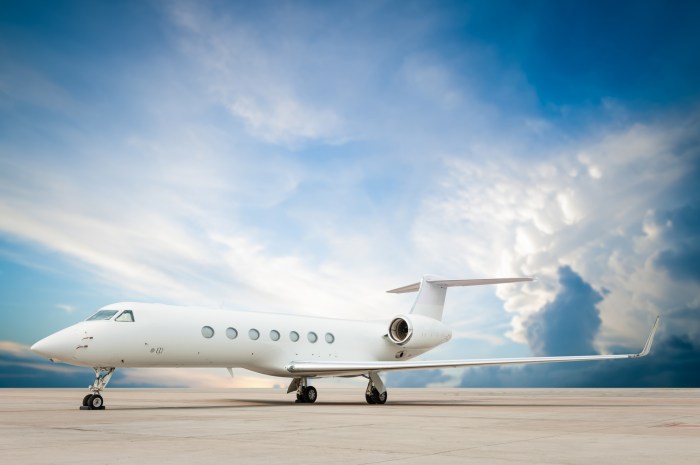
Source: viewthevibe.com
When it comes to flying private, understanding the various membership programs and ownership options can significantly impact the overall cost and experience. These programs cater to different needs and budgets, allowing travelers to access private jets conveniently and flexibly. Below, we delve into the nuances of membership programs, fractional ownership, and full ownership to provide a comprehensive overview of the costs and benefits associated with each.
Membership Programs
Several private jet membership programs offer different pricing structures, catering to varying travel frequencies and preferences. These programs typically involve an initial membership fee and monthly dues, which provide access to a fleet of aircraft. Below is an Artikel of some popular membership programs and their associated costs:
- Jet Card Programs: These programs allow members to purchase flight hours in advance. Prices can range from $150,000 to $500,000 depending on the aircraft type and hours purchased.
- Charter Memberships: A lower-cost option, charter memberships often require a smaller upfront fee, usually between $10,000 to $50,000, with costs incurred based on hourly rates for flights.
- Fractional Ownership Programs: These require members to buy a share of a jet, with costs typically starting at $500,000 and can reach several million dollars depending on the share size.
Membership programs can be advantageous for those who fly frequently, as they provide predictable costs and guaranteed availability.
Fractional Ownership versus Full Ownership
Understanding the difference between fractional and full ownership is crucial for potential private jet buyers. Fractional ownership allows individuals to own a share of an aircraft, which can be more cost-effective than full ownership while offering many benefits of private flying. Below are key contrasts between the two:
- Initial Investment: Fractional ownership requires a lower initial cash outlay compared to full ownership, which can reach upwards of $3 million for a new jet.
- Ongoing Costs: Fractional owners typically share maintenance, insurance, and operating costs, which can add up to 20-30% of the initial investment per year, whereas full owners bear all costs independently.
- Usage Flexibility: Fractional ownership provides flexibility with access to multiple aircraft types, while full ownership limits the owner to their specific jet model.
Both options present distinct advantages and challenges, and the choice ultimately hinges on individual travel needs and financial situations.
Cost and Benefits Comparison Table
To better understand the differences among various private jet services, here’s a comparison table that Artikels the costs and benefits associated with popular options:
| Service Type | Initial Cost | Annual Fees | Typical Hourly Rate | Benefits |
|---|---|---|---|---|
| Jet Card | $150,000 – $500,000 | $10,000 – $15,000 | $1,500 – $5,000 | Flexible access, no maintenance worries |
| Charter Membership | $10,000 – $50,000 | Varies based on usage | $2,000 – $5,000 | Lower commitment, pay-per-use |
| Fractional Ownership | $500,000 – several million | 20-30% of investment | $1,200 – $4,500 | Shared costs, multiple aircraft access |
| Full Ownership | $3 million and up | Maintenance, insurance, operation | $1,500 – $7,000 | Complete control, personalized experience |
Choosing the right option depends on individual flying habits, budgetary constraints, and the level of flexibility desired. Each of these programs has its unique advantages and financial implications, ensuring that there is a suitable option for varying travel needs.
Hidden Costs and Additional Expenses
When it comes to flying privately, many people often focus solely on the chartering cost, overlooking several hidden expenses that can significantly impact the total price. Understanding these additional costs is crucial for accurate budgeting and planning a private flight experience.The intricacies of private jet travel often lead to unexpected expenses that should be factored into your budget. These costs can vary widely based on the flight route, service level, and specific requirements.
Here are some common hidden costs that might arise:
Catering Services
Most private flights offer catering services, which can greatly enhance the flying experience. However, these services come at an additional cost and can vary considerably based on menu selection. It’s essential to consider the following:
- Standard catering often includes basic snacks and beverages, while gourmet meals can be arranged at a premium, sometimes ranging from $50 to $500 per person depending on the complexity of the menu.
- Special dietary requests or high-end catering options can further increase costs significantly.
Ground Transportation
Ground transportation is another expense that’s often overlooked. Arranging for a vehicle or chauffeur service to and from the airport can add to the overall travel budget. Specific points to keep in mind include:
- Luxury vehicle rentals or chauffeur services can start from $100 and go up to several hundred dollars, depending on the level of service and distance.
- Parking fees for personal vehicles may also apply, especially at private terminals.
Landing Fees and Other Charges
Landing fees can vary significantly based on the airport and the type of aircraft. These costs are often a surprise to first-time private flyers. Important considerations include:
- Fees can range from a few hundred to several thousand dollars, depending on the airport’s size and location.
- De-icing fees in colder climates and overnight hangar costs should also be accounted for, as they can add substantial amounts to your total bill.
Budgeting for unexpected costs when planning a private flight is crucial for a seamless travel experience. In addition to the above expenses, travelers should always leave room for unforeseen circumstances such as changes in the itinerary, additional layover costs, or last-minute service requests.Accurately estimating the total cost of a private flight journey involves evaluating all potential expenses. A well-rounded approach to budgeting should include:
- Charter cost
- Catering options
- Ground transportation
- Landing and handling fees
- Fuel surcharges, if applicable
By thoroughly assessing all these components, travelers can prepare a more comprehensive budget that reflects the true cost of their private flight, avoiding unexpected financial surprises.
Practical Tips for Budgeting a Private Flight
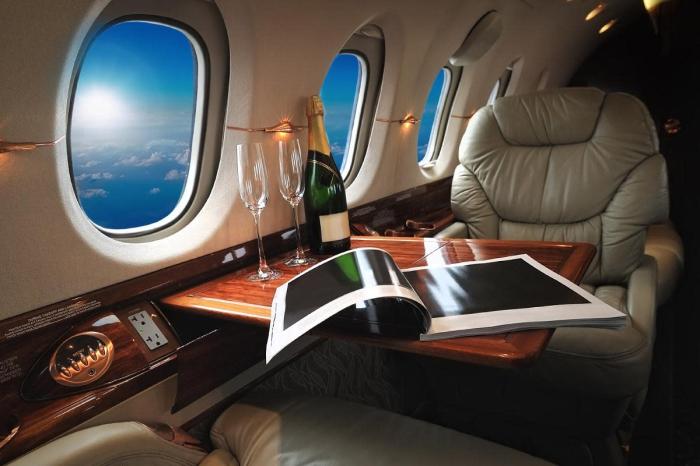
Source: thestreet.com
When considering a private flight, having a solid budget is crucial to ensure that you get the best value for your money. Private aviation can come with a hefty price tag, so understanding the financial landscape will help you make informed decisions. Here are some actionable tips that can help you budget effectively for your private flight experience.Researching different operators is essential, as pricing can vary significantly between companies.
By exploring various offerings, you can identify the best deals and ensure that your budget aligns with your travel needs.
Budgeting Guidelines and Checklist
Creating a budget for a private flight involves more than just calculating the cost of the flight itself. Here’s a checklist to help potential private flight customers estimate costs comprehensively:
- Determine the Type of Flight: Decide whether you need a one-way flight, round trip, or multi-leg journey, as each will have different pricing structures.
- Choose the Right Aircraft: Different aircraft types come with various operating costs, including fuel, landing fees, and crew expenses. Research which model best suits your needs.
- Consider the Distance: Longer flights will naturally incur higher costs—factor in fuel and crew time when estimating overall expenses.
- Evaluate Departure and Arrival Airports: Some airports have higher landing fees than others. Selecting smaller regional airports might save you money.
- Assess Additional Services: Catering, ground transportation, and overnight accommodations for crew can add to costs—plan ahead for these extras.
- Check for Membership Programs: Programs like Jet Card memberships or fractional ownership can offer savings and flexibility, so explore these options if you travel frequently.
- Plan for Hidden Fees: Always account for potential additional charges that may arise, such as de-icing fees or fuel surcharges.
Understanding these factors will give you a clearer picture of your financial commitment when flying privately.
“Researching various operators is the key to uncovering the best pricing options and ensuring you receive quality service at a fair rate.”
In your quest for the best pricing, take time to compare operators based on the services offered, aircraft availability, and customer reviews. This will not only help you find a competitive rate but also ensure that you fly with a reputable service provider who meets your standards.
The Future of Private Aviation and Pricing Trends
The private aviation sector is experiencing a dynamic transformation influenced by various economic, technological, and environmental factors. As we look ahead, it’s clear that pricing trends will continue to evolve alongside shifts in consumer preferences, advancements in technology, and increasing awareness of environmental impact. Understanding these trends is crucial for current and prospective private jet users to navigate the changing landscape effectively.
Technological advancements are playing a pivotal role in shaping the future of private aviation pricing. Innovations in aircraft design and manufacturing, such as the introduction of more fuel-efficient engines and lighter materials, are reducing operational costs for operators. These advancements are likely to translate into more competitive pricing for consumers. The rise of digital platforms that streamline the booking process has also made private flying more accessible, allowing for greater market competition and potential price reductions for consumers.
Current Trends in Private Aviation Pricing
Several key trends are shaping the pricing landscape in private aviation today. Understanding these trends can provide valuable insights into what to expect in the future.
- Increased Demand Post-Pandemic: The COVID-19 pandemic significantly altered travel preferences, with many individuals opting for private flights over commercial airlines due to health concerns. This surge in demand has led to upward pressure on pricing.
- Dynamic Pricing Models: Similar to the commercial airline industry, private aviation is increasingly adopting dynamic pricing models, which adjust rates based on factors like demand, distance, and aircraft availability. This approach can lead to fluctuating prices but also offers opportunities for lower fares during off-peak times.
- Emergence of Charter Marketplaces: The growth of online charter marketplaces has introduced more transparency in pricing, allowing consumers to compare rates and find better deals. This heightened competition is beneficial for buyers.
Technological Advancements Impacting Costs
Technological innovations are set to revolutionize the private aviation industry, not only in terms of safety and convenience but also in pricing. Here are some significant advancements that are likely to impact costs going forward:
- Electric and Hybrid Aircraft: The advent of electric and hybrid aircraft is expected to significantly reduce operational costs, including fuel expenses. As these technologies mature and become more widely adopted, pricing structures are likely to reflect cost savings.
- Advanced Flight Planning Software: New software solutions are enhancing operational efficiency by optimizing routes, reducing fuel consumption, and minimizing delays. This increased efficiency can lead to lower prices for end consumers.
- Automation in Operations: Automation in processes from maintenance to customer service is reducing operational overhead for private aviation companies. These savings have the potential to be passed on to customers in the form of lower prices.
Environmental Considerations Influencing Pricing
With the growing emphasis on sustainability and environmental responsibility, the private aviation sector is under increasing pressure to adopt greener practices. This shift is likely to influence pricing trends in notable ways:
- Carbon Offsetting Programs: As environmental regulations tighten, private jet operators may need to invest in carbon offsetting programs. These additional costs could lead to increased prices for consumers as companies seek to maintain profitability.
- Sustainable Aviation Fuel (SAF): The transition to SAF is becoming a priority for many operators to reduce their carbon footprints. While initially more expensive than traditional fuels, widespread adoption and technological improvements could lower costs over time, potentially stabilizing or even reducing prices.
- Regulatory Compliance Costs: As governments implement stricter environmental regulations, compliance costs may rise for private aviation companies. Such expenses are likely to be passed on to consumers, affecting overall pricing.
Final Wrap-Up
In summary, navigating the costs associated with private flying requires careful consideration and a clear understanding of all potential expenses. From membership programs to unexpected fees, being adequately prepared can enhance your flying experience. Ultimately, knowing how much a private flight truly costs will empower you to make better travel choices, ensuring you enjoy the luxury and convenience that comes with flying privately.
Top FAQs
What factors influence private jet pricing?
Key factors include distance, destination, aircraft type, seasonal demand, and operator fees.
Are there any membership programs for flying privately?
Yes, there are various membership programs that offer flexible options for private flying, often with different cost structures.
How does the size of the group affect costs?
Larger groups can reduce the average cost per passenger, making private flying more economical compared to commercial options.
What are some hidden costs associated with private flights?
Hidden costs can include catering, ground transportation, landing fees, and other ancillary services.
How can I budget effectively for a private flight?
Research different operators, estimate all potential costs, and consider creating a checklist to help manage your budget.
